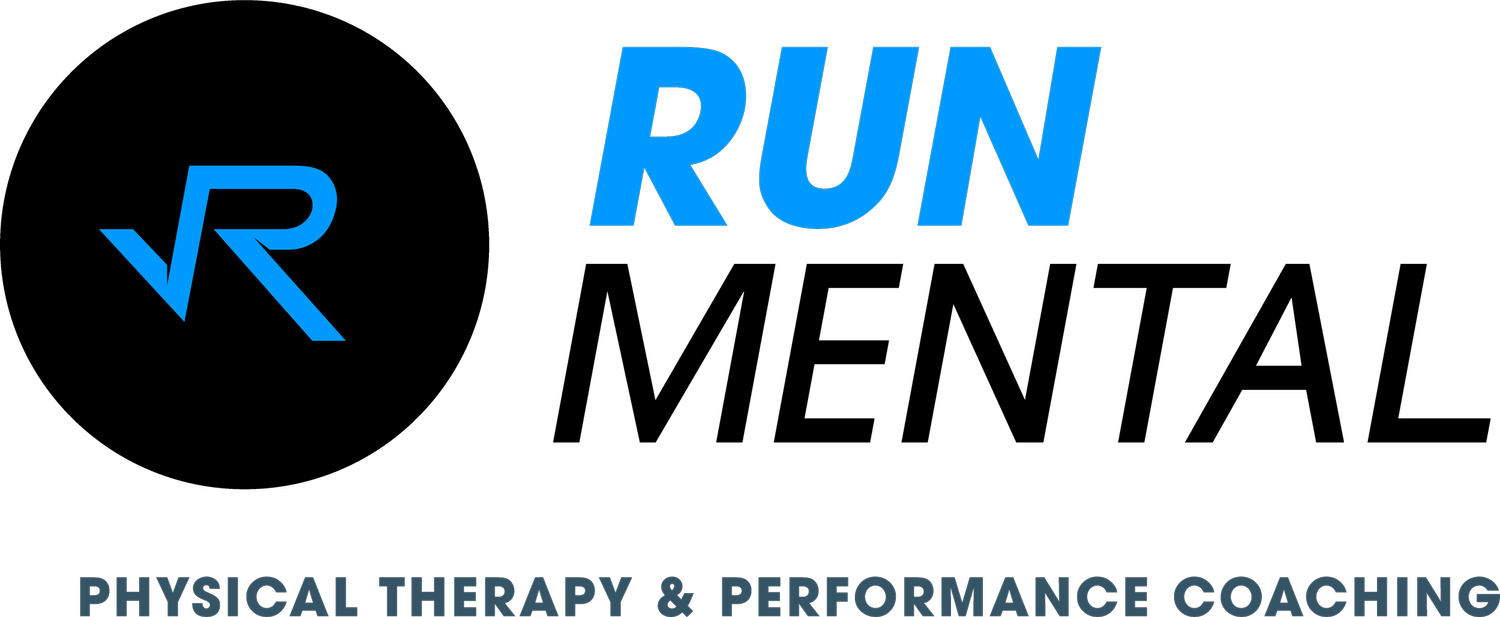So you have tendon pain…
Tendon pain? Here’s What You Need To Know.
Tendon issues and related pain are some of my favorites issues to treat and help people through. If you have had a stubborn episode of tendon pain, you may think I am crazy. But I like helping people with their tendon rehabilitation because it is a straightforward and successful process for most people. This does not mean it is quick and easy. It can be quite challenging in some cases and very frustrating. Sometimes, there are more layers of complication beyond just loading the tissue. However, taking a simplistic approach allows me to set people up for success with a limited number of in-person sessions, and the individual does most of the work independently while I function as a remote guide as needed.
Here are six important factors in tendon rehab that I discuss with patients frequently that aids in a successful rehab.
1. The tendon is still incredibly strong! (Reference 1,2)
A human tendon, including the patellar and Achilles, typically have a fracture stress of about 14,500 pounds per square inch. Fracture stress refers to the amount of tensile load needed for the tendon to rupture. Considering that your car’s tire pressure is sitting around 30-35psi, that is insanely strong. Even an unhealthy tendon can sustain a tremendous amount of force it can likely take before anything severe happens structurally.
2. Tendon pain does not equate to damage. (Reference 3-7)
You may be surprised to learn that not all healthy tendon tissue is asymptomatic. Similarly, abnormalities seen on imaging that indicate a pathology are not always symptomatic. Pain is rather complicated and something we haven’t fully understood yet. What then, makes a particular tendon more sensitive? I don’t have a great answer currently, but here is what I suspect. Following a training block that repeatedly involves a little too much work for the tendon, putting it in a state of disrepair or degeneration, a couple things that happen. First, is that there is vascular and nerve in-growth to the injured area, as with any other injury to help facilitate recovery. Second, is that there is an increase in collagen synthesis without a cyclical degradation of collagen due to a disruption of the tendons own circadian rhythm. These occurrences create an increase in pressure on those newly grown, sensitive nerves that can produce pain and stiffness in the tendon.
3. A thorough orthopedic evaluation is all you need.
A thorough evaluation allows you to rule out other tissues and/or conditions that sometimes presents similar symptoms. In some cases, this can alter the plan in terms of intervention, but it also helps to determine how aggressive we can be in terms of allowing pain with activity. Additionally, by seeing what is and isn’t tolerated well, we can start to shape an entry point to rehab, recommend relevant modifications, and identify alternative activities to help you remain active.
4. Progressive exercise is paramount to your recovery. (Reference 8-11)
Your tendon needs to be able to tolerate a certain amount of load or stress when you run. Fortunately, those demands are very predictable in nature for runners. Therefore, we know point B (the desired stress tolerance) and the evaluation tells us point A (where you are now). Utilizing a progressive exercise program we can ensure that we are dosing exercise in a way that is therapeutic in nature, so that symptoms will decrease over time, while function increases, and so that the desired structural change in the tissue is seen as well. Progressive exercise is really a home run for tendinopathies. Tendons are designed to take on tensile load. Additionally, progressive exercise is what’s needed at the cellular level to promote positive change. Slow movements and lighter weights are a great starting point when symptoms are more prominent, but progressing to faster movements and heavier weights as tolerated will yield the greatest long-term change structurally and in your ability to return to running.
5. Metabolic health is important. (Reference 12)
Two populations in whom we see higher rates of tendinopathy are people with high cholesterol and those with diabetes. Both create environments that are not tendon-friendly by effecting the strength of the collagen in the tendon. For those who struggle with either or both of these conditions, connecting with a sports registered dietitian can be vital to improve symptoms and your function long-term. In some cases, this could be more important than rehab.
6. Other modalities are unhelpful beyond temporary symptom relief. (Reference 8,13)
This one might ruffle some feathers, but let me explain what we know about tendon adaptation. Symptom resolution and tendon health are not always synonymous. As with many other tissues, you can have no pathological changes and still have pain, whereas others have pathological changes and no pain, as discussed above. To make true structural change in a tendon, we need time and a properly dosed regimen of progressive exercise prescription. Other steps such as extended rest, massage, scraping, dry needling, and injections can offer short term relief, but not much more than that. They don’t get at the deeper issue(s) that resulted in the development of the tendon pain, nor do they improve the tendon’s capacity to tolerate the demands you would like to place on it.
If you feel that you need any help navigating the waters of pain or injury, especially with a tendon, please don’t hesitate to reach out to me or another trusted professional. You canconnect with me via phone at (719) 270-3155 or email at runmental@gmail.com. I am also active on Instagram and within my Facebook group, Strength in the Springs, where I frequently post educational material about running rehab and training.
Happy running!
References:
1. Kongsgaard M., Aagaard P., Kjaer M., et al. Structural Achilles Tendon Properties in Athletes Subjected to Different Exercise Modes and in Achilles Tendon Rupture Patients. J Appl Physiol. 2005 Nov;99(5):1965-71
2. Wren T., Yerby S., Beaupre G. et al. Mechanical Properties of the Human Achilles Tendon. Clin Biomech. 2001;16(3):245-51
3. Maffulli N., Helander K., Migliorini F. Tendon Appearance at Imaging May be Altered, But it May Not Indicate Pathology. Knee Surg Sports Traumatol Arthrosc. 2023 May;31(5):1625-1628
4. Cook J., Purdam C. Is Tendon Pathology a Continuum? A Pathology Model to Explain the Clinical Presentation of Load-Induced Tendinopathy. Br J Sports Med. 2009 Jun;43(6):409-16
5. Ackermann P. Neuronal Regulation of Tendon Homoeostasis. Int J Exp Pathol. 2013 Aug;94(4):271-86
6. Yeung C., Svensson R., Yurchenko K., et al. Disruption of Day-to-Night Changes in Circadian Gene Expression with Chronic Tendinopathy. J Physiol. 2023 Feb 21
7. Pringels L., Cook J., Witvrouw E., et al. Exploring the Role of Intratendinous Pressure in the Pathogenesis of Tendon Pathology: a Narrative Review and Conceptual Framework. Br J Sports Med. 2022 Aug;57(16):1042-1048.
8. Lazarczuk S., Maniar N., Opar D., et al. Mechanical, Material, and Morphological Adaptations of Healthy Lower Limb Tendons to Mechanical Loading: A Systematic Review and Meta-Analysis. Sports Med. 2022 Oct;52(10):2405-2429.
9. Kongsgaard M., Kovanen V., Doessing S., et al. Corticosteroid Injections, Eccentric Decline Squat Training and Heavy Slow Resistance Training in Patellar Tendinopathy. Scand J Med Sci Sports. 2009 Dec;19(6):790-802
10. Mellor R., Bennel K., Grimaldi A., et al. Education Plus Exercise Versus Corticosteroid Injection use Versus a Wait and See Approach on Global Outcome and Pain From Gluteal Tendinopathy Prospective, Single Blinded, Randomized Clinical Trial. Br J Sports Med. 2018 Nov;52(22):1464-1472
11. Beyer R., Kongsgaard M., Kjaer B., et al. Heavy Slow Resistance versus Eccentric Training as Treatment for Achilles Tendinopathy: A Randomized Controlled Trial. Am J Sports Med. 2015 Jul;43(7):1704-11
12. Skovgaard D., Siersma V., Klausen S., et al. Chronic Hyperglycemia, Hypercholesterolemia, and Metabolic Syndrome are Associated With Risk of Tendon Injury. Scand J Med Sci Sports. 2021 Sep;31(9):1822-1831
13. Cook J. Ten Treatments to Avoid in Patients with Lower Limb Tendon Pain. Br J Sports Med. 2018 Jul;52(14):882


